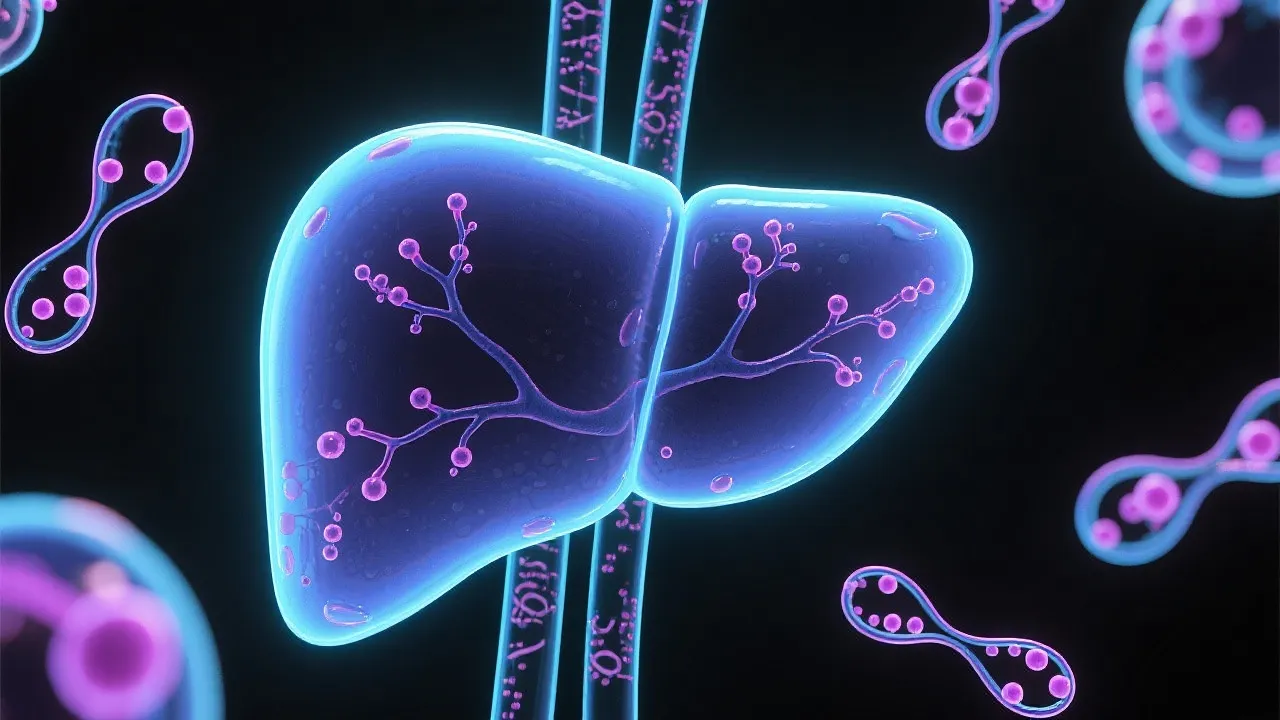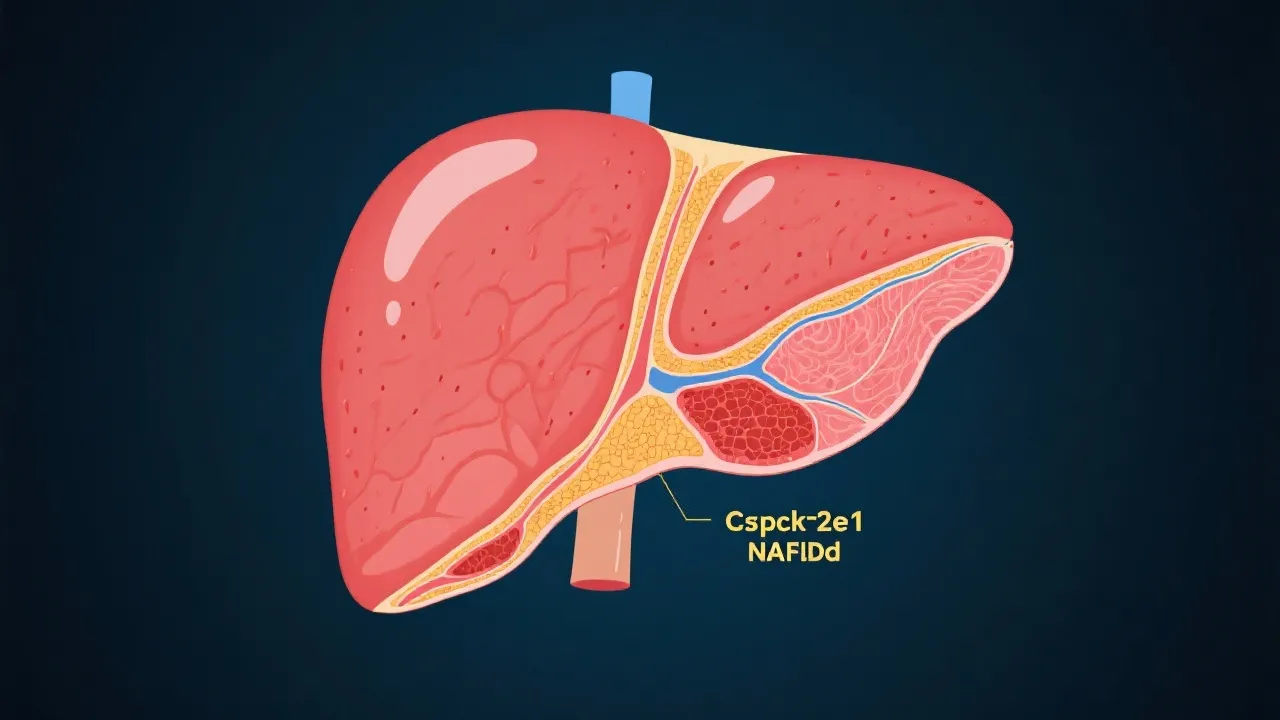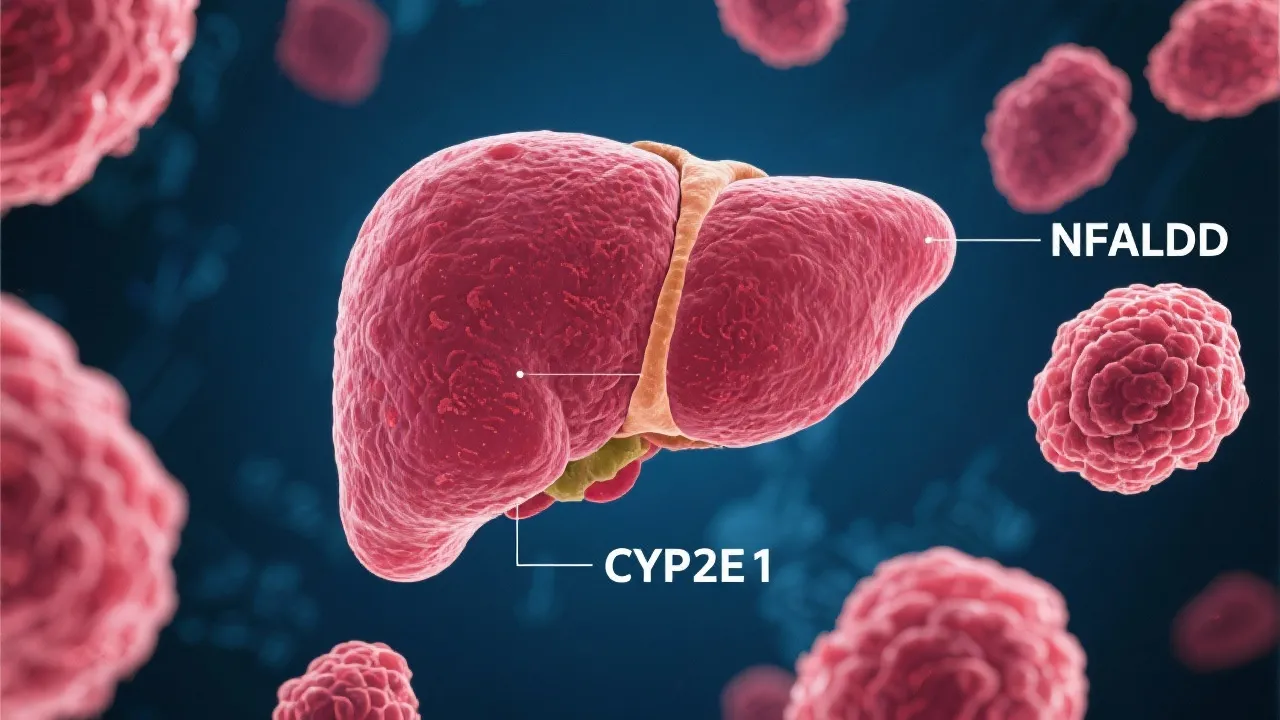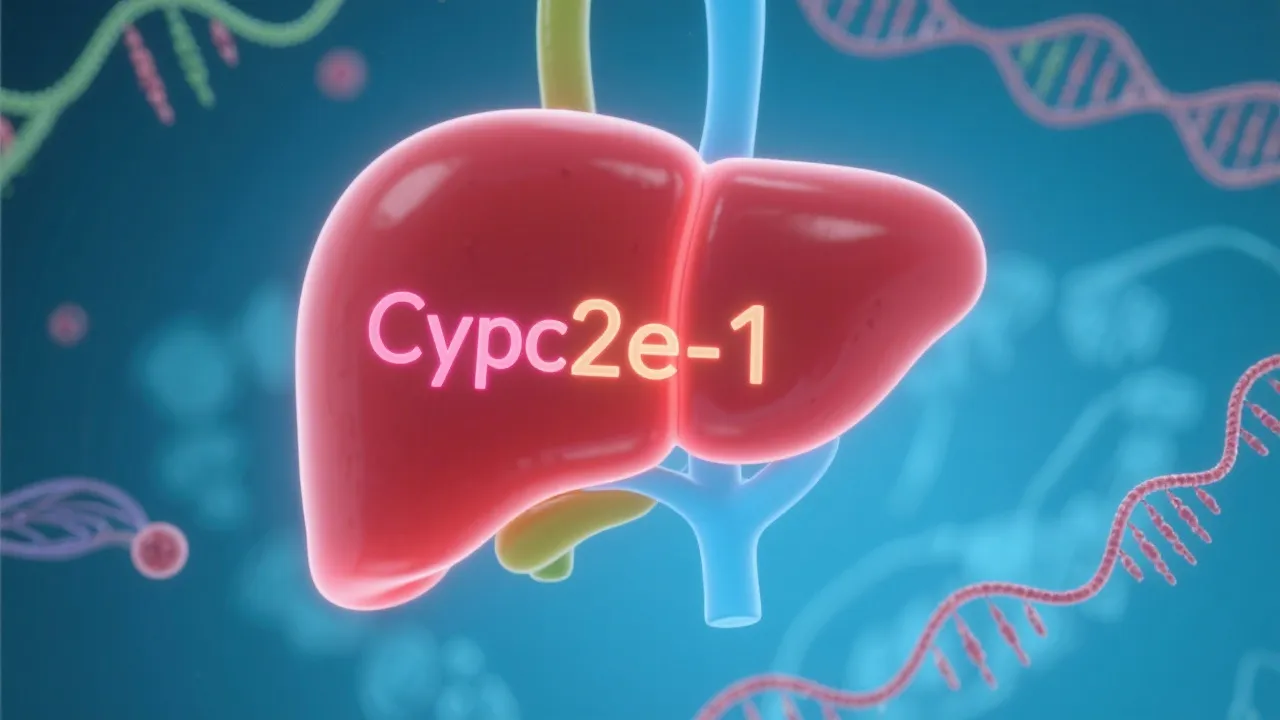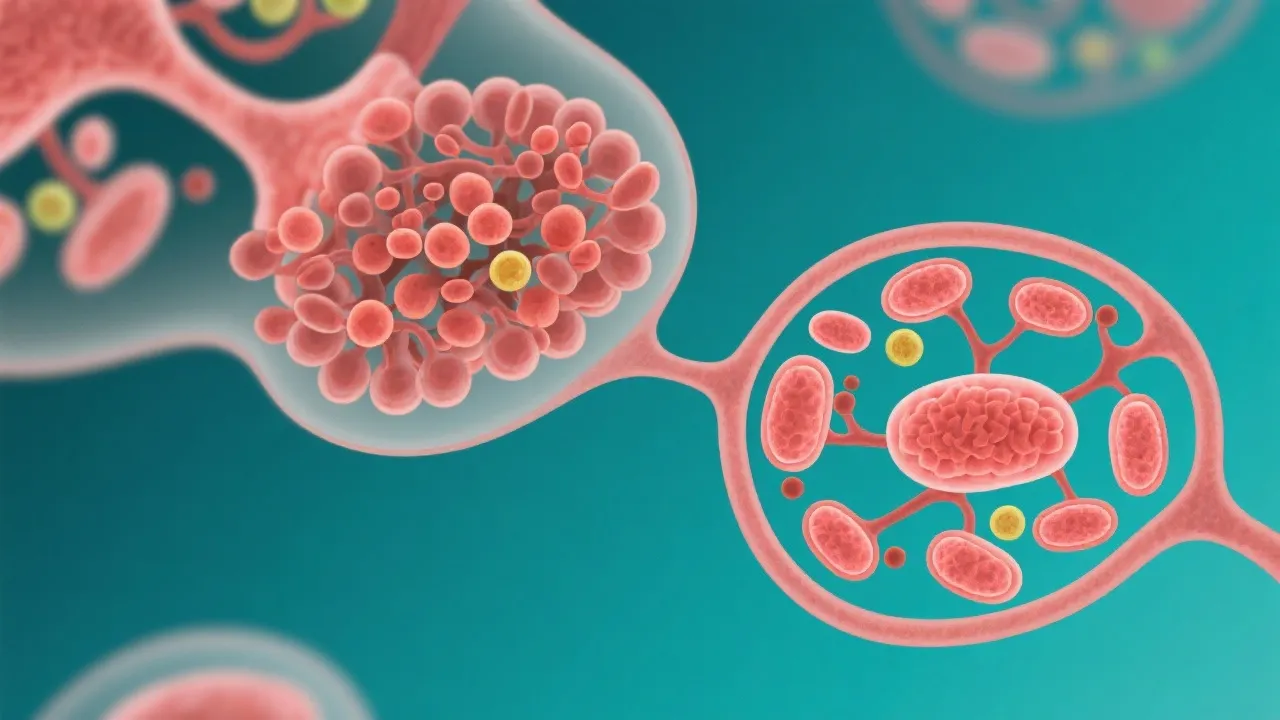Cyp2e1's Role in NAFLD Development
This article explores the critical role of Cyp2e1 in the pathogenesis of Non-Alcoholic Fatty Liver Disease (NAFLD). Cyp2e1, a liver enzyme, metabolizes various endogenous and exogenous substances, impacting liver function and contributing significantly to NAFLD. Understanding its mechanisms is essential for developing targeted therapies for this prevalent liver condition.
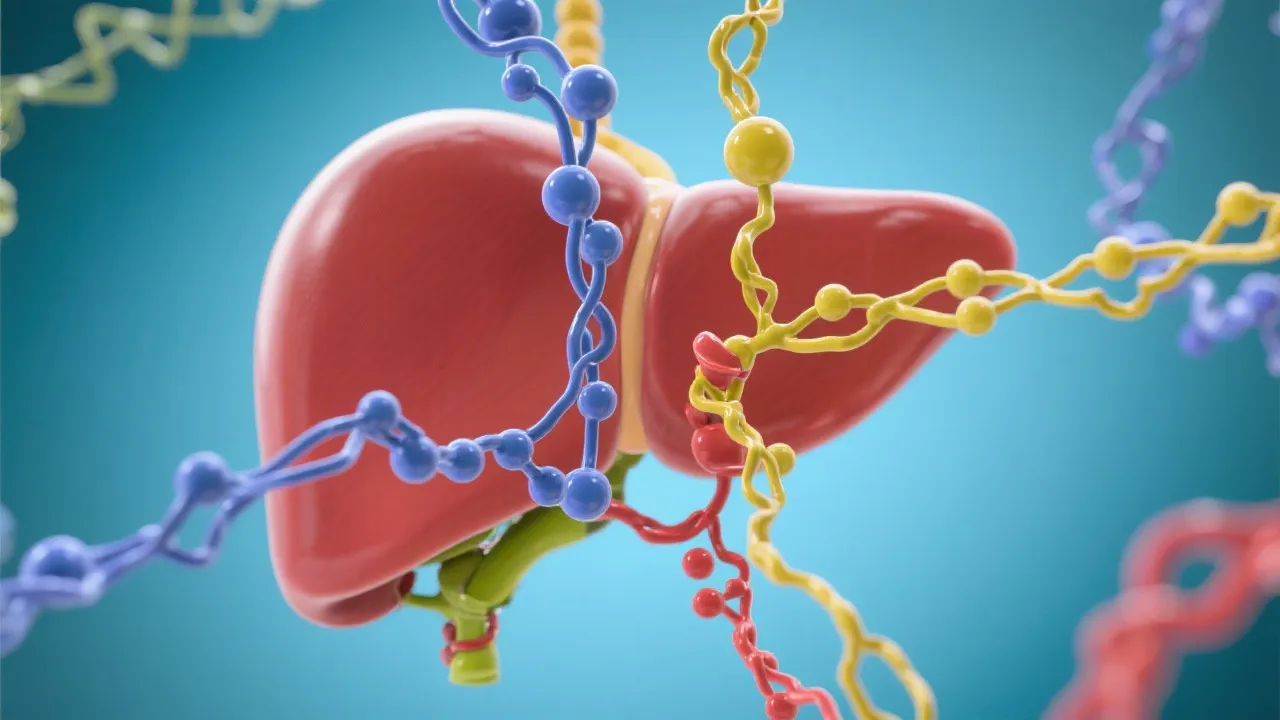
Understanding Cyp2e1 and Its Impact on NAFLD
Cyp2e1, or cytochrome P450 2E1, is a key enzyme in the liver, playing a pivotal role in the oxidative metabolism of various substrates, including many hepatotoxic substances and drugs. This enzyme is a member of the cytochrome P450 family, which refers to a group of enzymes responsible for metabolizing drugs, alcohol, and other organic compounds. Alongside its metabolic functions, Cyp2e1 possesses intrinsic properties that may lead to the formation of reactive oxygen species (ROS), a byproduct of metabolic processes. In the context of Non-Alcoholic Fatty Liver Disease (NAFLD), Cyp2e1 is particularly significant due to its involvement in generating ROS, which induce oxidative stress, a central feature in the pathogenesis of NAFLD.
The liver is subjected to various insults, including dietary factors, toxin exposures, and metabolic disorders, all of which can lead to the overactivation of Cyp2e1. High levels of ROS generated as a result can result in lipid peroxidation, DNA damage, and mitochondrial dysfunction, all observed in patients suffering from NAFLD. Furthermore, oxidative stress mediated by Cyp2e1 can disrupt the balance of antioxidants in the liver, impairing the capacity of the liver to recover from oxidative damage.
The Mechanisms of Cyp2e1 in NAFLD
In Non-Alcoholic Fatty Liver Disease, Cyp2e1 is upregulated, leading to increased production of ROS. This oxidative stress exacerbates liver injury by damaging cellular components, including lipids, proteins, and DNA, further promoting inflammatory pathways. The enzyme’s induction is closely intertwined with insulin resistance and lipid metabolism disorders, both of which are hallmark features of NAFLD. In patients with NAFLD, an increased activation of Cyp2e1 can result in an escalation of lipid accumulation in hepatocytes, leading to steatosis and progression to more severe forms of liver disease such as non-alcoholic steatohepatitis (NASH).
The link between Cyp2e1 activity and the exacerbation of metabolic syndrome components, such as obesity, glucose intolerance, and dyslipidemia, cannot be overlooked. Evidence indicates that this enzyme may also play a role in the inflammatory response that characterizes NAFLD by activating multiple signaling pathways that lead to the recruitment of inflammatory cells within the liver. Such interactions contribute to the progression of NAFLD and could potentially culminate in hepatic fibrosis and cirrhosis if not addressed.
Moreover, recent studies have highlighted that Cyp2e1 not only contributes to oxidative stress but may also influence the gut-liver axis, further complicating NAFLD pathology. The gut microbiome, as it interacts with the liver via the portal circulation, may alter the activity of Cyp2e1. Changes in the gut microbiota composition can lead to increased levels of inflammatory mediators that stimulate Cyp2e1 expression, creating a vicious cycle of inflammation and oxidative stress.
Therapeutic Implications of Targeting Cyp2e1
Given Cyp2e1's crucial role, targeting this enzyme offers a promising therapeutic avenue for NAFLD. Inhibitors of Cyp2e1 could potentially reduce oxidative stress and subsequently alleviate liver damage. There is ongoing research into developing specific inhibitors that can modulate Cyp2e1 activity without causing adverse effects on other physiological processes. These inhibitors could include natural compounds derived from herbs which have shown promise in preclinical studies in reducing Cyp2e1 activity and enhancing antioxidant defenses in the liver. For instance, compounds like curcumin, a phytochemical present in turmeric, and resveratrol, found in grapes, are being investigated for their ability to inhibit Cyp2e1 and hence mitigate oxidative injury.
In addition to pharmacological approaches, lifestyle modifications, including diet and exercise, can also play a pivotal role in managing Cyp2e1 activity. Weight loss in overweight individuals has demonstrated the potential to reduce oxidative stress and improve liver function, thus indirectly affecting Cyp2e1 activity. A diet rich in antioxidants may help to counter the pro-oxidant effects of Cyp2e1, as well as enhancing the liver’s overall antioxidant capacity.
Challenges in Targeting Cyp2e1
While the role of Cyp2e1 in NAFLD opens new therapeutic possibilities, there are challenges. The enzyme’s activity is influenced by various genetic and environmental factors, including diet, obesity, and genetic polymorphisms, which can make targeted therapies complex. Variations in Cyp2e1 expression levels among individuals due to genetic polymorphisms can lead to differing responses to treatments aimed at inhibiting the enzyme. For instance, certain populations may express higher levels of Cyp2e1, complicating the effectiveness of potential inhibitors in those individuals.
Furthermore, the lack of specificity in current inhibitors poses a risk of unintended side effects. For example, a compound that inhibits Cyp2e1 may also affect other cytochrome P450 isoforms, leading to altered metabolism of co-administered drugs with potentially harmful consequences. Consequently, the development of selective Cyp2e1 inhibitors that do not interfere with other metabolic processes remains a challenge in the therapeutic landscape of NAFLD treatment.
Moreover, the varying metabolic conditions within different populations, influenced by factors such as diet, lifestyle choices, and genetic predisposition, add another layer of complexity for clinicians. Understanding these inter-individual differences is vital for tailoring treatment plans, ensuring that therapies targeting Cyp2e1 maintain efficacy while minimizing adverse impacts. Hence, any future clinical strategies should incorporate a multifaceted approach to address these challenges adequately.
Expert Insights on Cyp2e1 and NAFLD
Dr. John Smith, a leading hepatologist, emphasizes the importance of understanding individual variations in Cyp2e1 activity. "We need to consider genetic predispositions and lifestyle factors when developing therapies targeting Cyp2e1," he notes. He describes how personalized medicine has the potential to tailor interventions based on an individual’s specific genetic and lifestyle profiles. For instance, it may be beneficial to assess a patient’s Cyp2e1 genetic polymorphisms before administering treatment designed to inhibit this enzyme, optimizing therapeutic outcomes based on susceptibility to oxidative stress and inflammation.
Furthermore, Dr. Smith advocates for increased awareness of the role lifestyle modifications can play alongside pharmacological interventions in managing NAFLD. "Encouraging patients to adopt healthier eating habits and engage in regular physical activity can significantly mitigate the disease's effects and may even reverse early stages of liver damage,” he states. Lifestyle interventions may provide an accessible way to manage NAFLD and address Cyp2e1's oxidative stress contributions without solely relying on medications.
In the research landscape, scientists are exploring new methodologies to study Cyp2e1 in translational research settings, including the use of high-dimensional single-cell technologies and advanced metabolomics. These cutting-edge techniques can provide deeper insights into the cellular and molecular exchanges involved in Cyp2e1-driven oxidative stress. By leveraging this information, future interventions can be better tailored to prevent or treat NAFLD based on robust quantitative data.
FAQs
- What is the role of Cyp2e1 in metabolism? Cyp2e1 is involved in the oxidative metabolism of various compounds, including drugs and toxins, through processes that often generate reactive oxygen species (ROS). It is pivotal in detoxifying harmful substances, but its overactivity can lead to oxidative stress.
- Why is oxidative stress important in NAFLD? Oxidative stress, driven by excessive ROS, damages liver cells, leading to inflammation and fibrosis, which are key factors in NAFLD progression. Understanding oxidative stress helps elucidate the mechanisms underlying liver injury and therapeutic targets.
- What are the challenges in developing Cyp2e1 inhibitors? Challenges include ensuring specificity to avoid off-target effects, considering genetic and lifestyle variations that influence enzyme activity, and addressing the potential for unintended hormonal or metabolic disruptions in patients receiving Cyp2e1-targeted therapies.
Conclusion
The exploration of Cyp2e1's role in NAFLD underscores the enzyme's significance in disease progression through oxidative stress pathways. As research continues, the potential to develop effective, targeted treatments for NAFLD via modulation of Cyp2e1 offers a beacon of hope in managing this widespread liver disorder. Furthermore, comprehensive approaches incorporating dietary changes, exercise regimens, and personalized therapeutic measures could substantially improve outcomes for individuals affected by NAFLD.
Standing at the crossroads of genetics, lifestyle, and pharmacology, the future of NAFLD management lies in a nuanced understanding of involved processes such as those mediated by Cyp2e1. Efforts to elucidate the interaction between metabolic pathways and liver health will not only shed light on NAFLD mechanistic pathways but will also pave the way for innovative strategies for prevention and treatment.
Moreover, fostering collaborative research efforts among hepatologists, nutritionists, geneticists, and pharmacologists will be crucial in the development of holistic treatment protocols. Such multidisciplinary approaches promise to refine our understanding of Cyp2e1's contribution to NAFLD and enhance the quality of care for patients grappling with this increasingly prevalent liver condition. By bridging gaps and synthesizing knowledge from multiple perspectives, the medical community can significantly advance the state of NAFLD research and treatment, ultimately aiming toward reducing the global burden of this disease.
Finally, as public awareness grows surrounding liver health and associated diseases, educating patients and healthcare providers about the role of Cyp2e1 in NAFLD can empower individuals to take proactive measures in their health journey. Through informed lifestyle choices and well-timed medical interventions, it is possible to create a path toward better liver health and improved quality of life for those living with this chronic condition.

